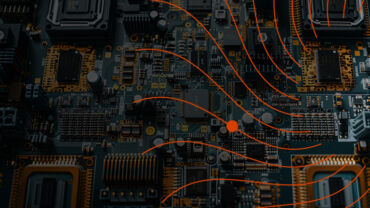Not all companies think about indirect tax automation in the same way, and different companies are at different stages in their technological journey. According to a recent State of the Corporate Tax Department report by Thomson Reuters Institute only one-quarter of the companies surveyed already have robust indirect tax automation tools and practices in place, while others are just beginning their tax digitalization journey.
In a recent Thomson Reuters webinar, a panel of indirect tax experts discussed what companies interested in expanding their tax automation capabilities can expect at each stage of their technological journey, including the challenges and obstacles they may need to overcome.
Regardless of the level of tax automation a company plans to adopt, there are always questions about how far and how fast an organization should go when incorporating tax automation, what the organizational implications will be, and how an investment in tax engine software will ultimately benefit the bottom line.
The sophistication level of a company’s tax department is another factor that affects their approach to employing technology.
While tax technology is seen as a key part of the tax compliance strategy, however, adoption continues to lag. Less tech-savvy tax departments, however, “are feeling strained and are more likely to be in the unfortunate position of having to take on new technology projects at the same time as they strive to simply get through the day-to-day,” the report says.
 |
|
The 3 levels of indirect tax automation
To answer these, and other questions about the benefits of tax automation requires understanding the three basic levels of tax technology adoption. In addition, it helps to evaluate the process companies typically go through when integrating various solutions into their workflows.
Tax automation level 1: Internally, the tax personnel are still relying on spreadsheets, creating their own macros and formulas in Excel, and manually gathering the information they need to file indirect taxes in different jurisdictions. Taxes may be handled by individuals in dispersed teams, and the company may or may not be relying on their ERP system to organize and deploy sales tax, use tax, and value-added tax (VAT) data to different stakeholders. Most tax functions are not automated, and, though some level of automation may have been discussed, many companies at this stage of their technological adoption simply outsource these capabilities in the belief that it is a more cost-effective, less resource-strained solution (though it may not be).
Tax automation level 2: An automated solution has been adopted and some people in the organization are utilizing it, but the software hasn’t been fully configured and integrated into the organization’s day-to-day workflows or culture. As a result, many of the benefits of tax automation are not being realized, and the full potential of the solution has yet to be unleashed. Those who are change-averse may still be reluctant to embrace the new technology. Breaking down legacy silos between tax and other functional departments (for example, Finance) remains an ongoing challenge.
Tax automation level 3: The tax engine and ERP are fully integrated and clean data is flowing into the system. The data itself is centralized and accessible to relevant stakeholders. Workflows are efficient and, because of extra time savings and access to data, the tax department is finding creative ways to take strategic action. The tax function is raising its stature in the organization and creating leadership opportunities for itself that didn’t exist before.
Tax automation is more than just a trend
As you may have noticed, how the tax department functions within an organization tends to evolve along with the enterprise’s technological sophistication. At the lower end of the technological ladder, less-savvy tax departments with little or no automation may be thought of as back-office number-crunchers. At higher levels of automation, when data and processes are fully integrated and indirect tax software tools are available to engage in forward-looking analytics, the tax department is able to move beyond the transactional stasis that prevents less advanced departments from evolving.
The trend toward greater tax automation isn’t just another business fad, either. It’s being driven by a number of cultural and economic factors that are reshaping the entire business world, like:
- Remote work, which accelerated during the COVID-19 pandemic
- Data access requirements by remote workers, typically delivered in the cloud (data virtually via the cloud)
- Collaboration by virtual workers that depends on having a “single” source of data
- Growing preferences by consumers for buying online that require processing indirect taxes more efficiently and accurately
- Governmental pressure on companies to digitize their tax operations for greater transparency
- Governmental pressure to calculate, report, and remit sales and use taxes, as well as value-added taxes (VAT), in real-time
- C-suite’s increasing interest in leveraging indirect tax data to compete more effectively
- IT’s need for technologies that scale as an organization grows
Tax automation in the cloud
The COVID-19 pandemic has accelerated the rate at which companies are shifting to cloud-based business infrastructures and more automated indirect tax processes. Remote workers need secure communications and access to data, and companies need more resilient networks to withstand the disruptions of an increasingly unstable world—all of which the cloud can deliver. Furthermore, when compared to on-premise solutions, cloud tax software requires less physical infrastructure and IT oversight, which makes it ideal for managing the sort of decentralized, hybrid work environments that have evolved in response to the pandemic and are anticipated to persist into the foreseeable future.
Indirect tax automation needs a compelling business case
Still, despite automation’s obvious advantages, persuading a company to invest in tax automation is not necessarily a slam dunk. One can talk all day about the benefits of automation – more efficient operations, more accurate tax calculations, clean data, fewer audits, less stress on IT, etc. – but without demonstrating ROI and securing buy-in from the top, along with an accompanying technological vision for the company as a whole, appeals to automate may fall on deaf ears.
Companies that are highly siloed and accustomed to working in separate departmental fiefdoms can be particularly difficult to convince. What’s often required is a concerted effort to communicate how tax automation and other cloud-based software systems can benefit each department, and how centralized access to indirect tax data can improve performance and reporting and streamline a business’s overall operations.
|
|
6 key considerations for indirect tax automation
To gain the benefits of accuracy and efficiency that tax automation can provide, here are a few important points to consider that will increase your team’s likelihood of success:
1. Assess current processes
Before undertaking any automation project, businesses need to assess the efficacy of their current processes and decide which ones can benefit from automation. Understand what problems can – and can’t – be solved by automation. Not all processes can or should be automated, and there is no magic, one-size-fits-all formula for incorporating automation.
2. Build a business case for tax engine software that includes an ROI
Make sure to build a business case for indirect tax automation. Include stakeholders from outside the tax department in the process. For example, people from Finance and IT. Conduct internal research. Use real numbers and concrete examples to substantiate an ROI. Find a competitor or comparable company that has undertaken a similar automation project and share their results. Illustrate both the internal benefits of tax automation, as well as the risks associated with failing to keep pace with competitors.
3. Understand the company culture
Identify challenges and obstacles by doing an honest assessment of the company and its culture. Decentralized companies that engage in a great deal of M&A activity can be especially difficult to integrate. Companies that are already partially integrated through an ERP system such as SAP® or Oracle® may only need minimal assistance to add a tax engine to their tech stack.
4. Emphasize the benefits of using tax engine software
Acknowledge the elephant in the room: that automating some repetitive, labor-intensive tax processes will likely change the way the indirect tax department functions and how individual tax professionals in a company do their job, which is a good thing. Emphasize the many benefits automated tax software can bring to the indirect tax team and the broader organization, including the creation of a more relevant, strategically aligned tax department – one that provides data-intensive analysis, insight, and guidance to leaders looking for answers to today’s complex business problems.
5. Face reality – and improve it
Companies that are more advanced in their technological development need to understand what their current platforms and programs can accomplish, and which ones can be improved. For example, some companies rely entirely on their ERP system to handle tax data, even though such systems are not designed for complex tax work. Others rely on simpler Robotic Process Automation (RPA) tools for tax calculations, and these can be easily enhanced by adopting a more powerful tax engine with accompanying tools for tax data analytics.
6. Above all: Communicate
No matter what stage a company is in, in its technological evolution, one ingredient of success remains constant: communication. Integrating a company’s processes and workflows into a centralized, cloud-based system requires that all stakeholders in every relevant department understand what is happening and why. There are practical reasons for this kind of inclusiveness. For one, data-sharing occurs more frequently under a centralized system, which means previously siloed teams will need to learn how to work cross-functionally. For another, effective organizational alignment requires everyone to be on board with the new system and to agree, at least in principle, that the changes being implemented are necessary and inevitable.
Creating a tax and technology vision for the future
Make no mistake: The purpose of tax automation is to take the grunt work out of certain repetitive processes and – through greater efficiency, better analytical tools, and enhanced strategic awareness – transform the overall utility and value of a company’s tax department.
In order for such projects to succeed, everyone involved needs to be engaged in the process from top to bottom, and leadership needs to make sure that all stakeholders, including investors and the public at large, see the connection between the company’s technology decisions and its ultimate vision for the future.
 |
|
 |
|












